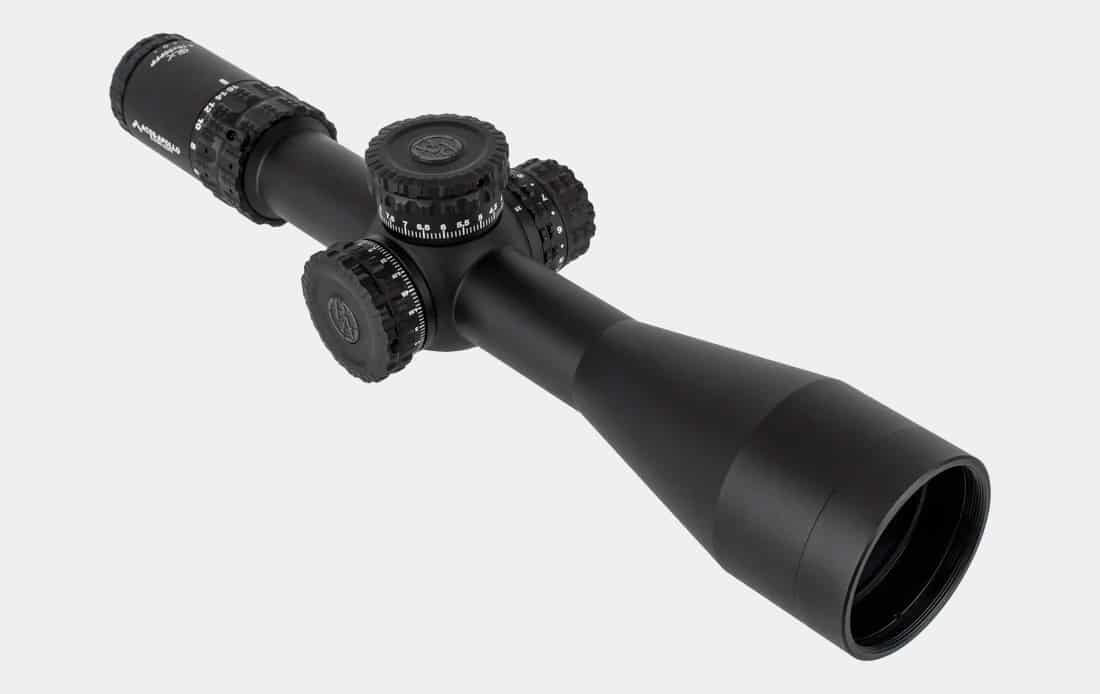Review: Primary Arms GLx 4-16x50FFP Rifle Scope
December 18th, 2022
6 minute read
I’ve run all types and quality rifle optics, from premium riflescopes that require you to take out a mortgage to own to poorly made scopes that should have come free inside a box of Cracker Jacks. If I test one and I like it, I tend to try it out on several of my rifles. The Primary Arms GLx 4-16x50FFP riflescope is on its third rifle of mine.
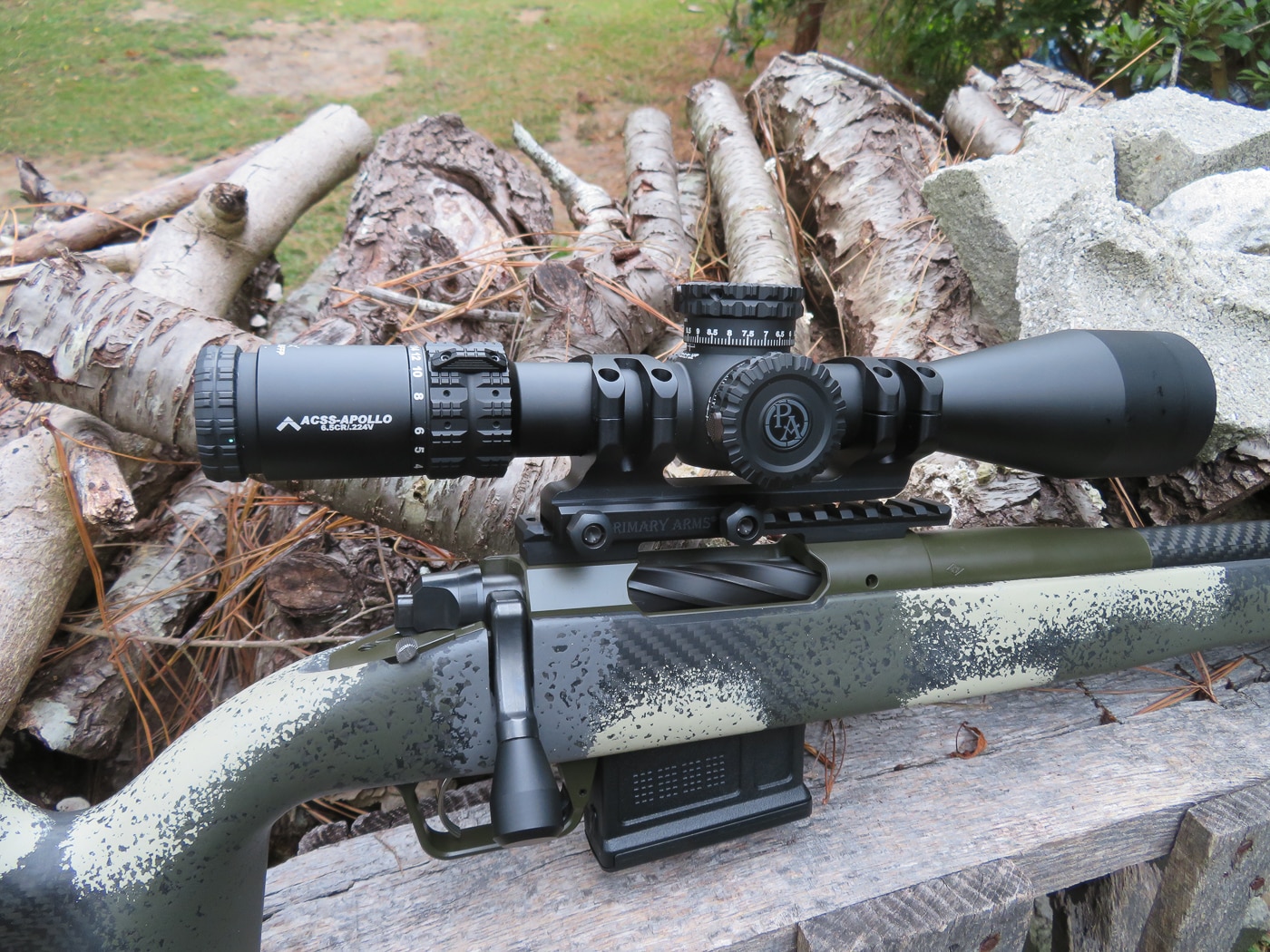
Primary Arms describes their GLx line as their mid-tier optics series, but after using this scope I would think it’s top-of-the-line glass — but without the premium price tag. At $750, the GLx scope is a bargain. Primary Arms keeps manufacturing costs down by building the scopes in the Philippines at a top OEM factory.
The first thing I noticed with the GLx was the clarity of the glass. Edge to edge, the picture was crystal clear and sharp. Colors are vibrant so you can see into shadows to distinguish antlers from branch twigs. At dawn and dusk, the scope sucks up light so targets are easier to spot and view.
First Focal Plane Reticle
The scope is built on a 30mm tube with a first focal plane (FFP) reticle. The reticle increases or decreases in size as you adjust magnification. The resistance of the knurled magnification ring requires a good grip. Rest assured, magnification will not change if the scope is accidentally bumped. A lever would make adjusting the magnification easier, but they can snag on gear or the environment. Instead, Primary Arms decided to add a raised tab that provides the needed leverage. The tab can be moved to three different positions depending on how you use the magnification ring.
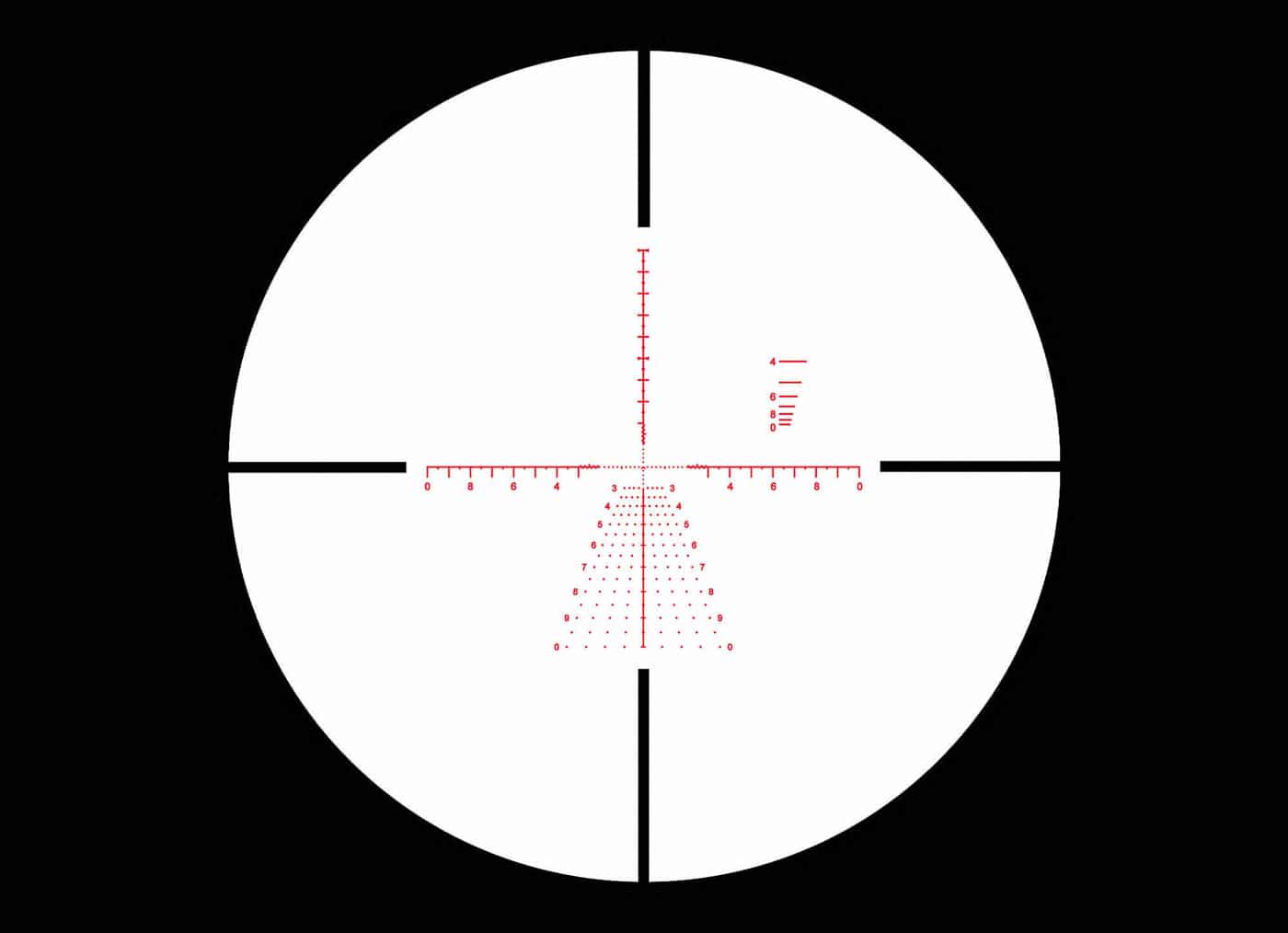
The low-profile turrets are large and gnarly and easily manipulated, even with gloved hands. All GLx scopes feature Auto Locking and Return to Zero, meaning each turret automatically locks in the zero position and unlocks again with the push of a triangle-shaped button. Shooters are either for or against locking turrets. I’m in the pro locking turrets camp since a bumped turret is less likely to move. The issue I have with locking turrets regards those with tricky locking systems. Primary Arms positioned the locking button and made it large enough, so that it is not a hindrance when making adjustments.
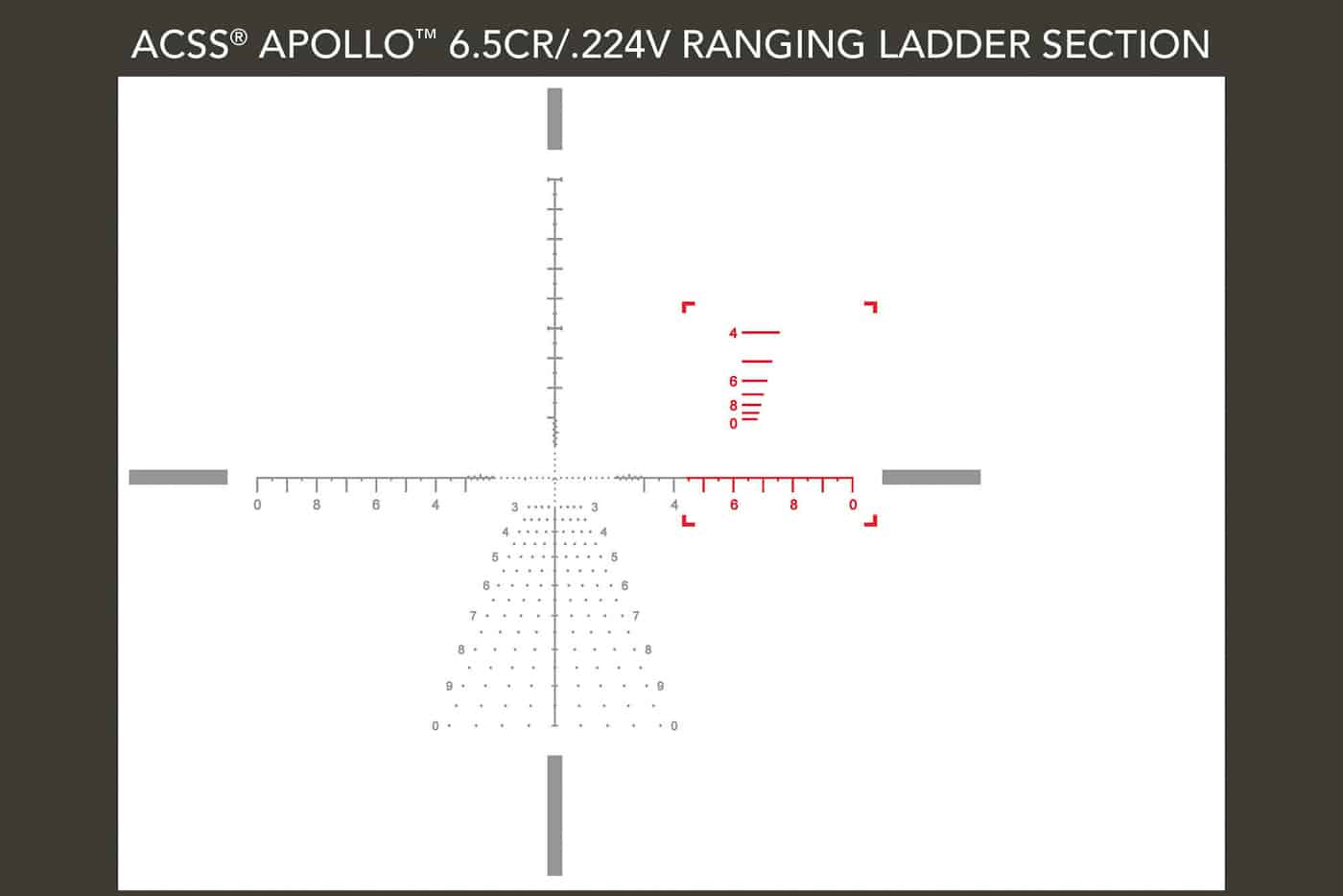
The windage turret is conveniently marked for left and right rotation. The elevation turret is also marked up and down. The windage turret will lock at zero at every complete rotation. The elevation turret will spin up to four rotations, and rotation indicators helped me to keep track of where I’m at. Spin the turret down and it will stop and lock at zero. This makes it easy and simple to return to zero after adjusting for range and you have one of those moments: Which way do I turn it to get back to zero?
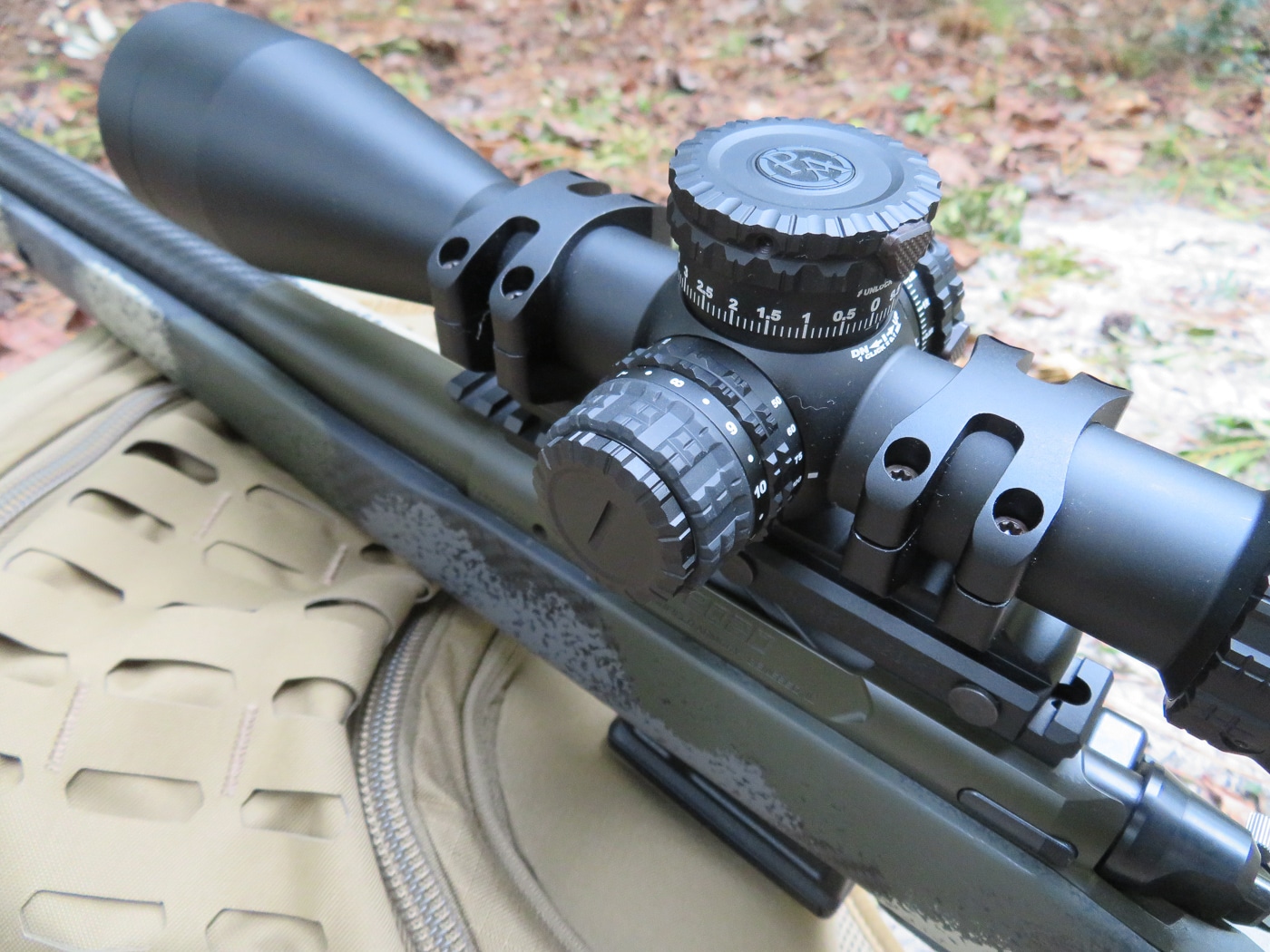
Primary Arms makes the click rings from a hardened steel-on-steel construction, so the clicks are crisp, audible, and tactile. Brass is often used for the click ring even with high-end riflescopes. Steel on steel keeps a solid feel even with a lot of use, while with brass the feel eventually deteriorates with use. The steel click ring and click pin are lubed and sealed, so rust should not be a concern.
ACSS Apollo Calibrated Reticle
When hunting, you don’t have the time to fuss with turrets. I do, however, understand setting up on a known distance, say across a North Carolina bean field, but for the most part, the reticle should allow for fast target acquisition — even with wind. Some reticles attempt this but can be overly complicated like a college-level geometry problem. The ACSS (Advanced Combined Sighting System) Apollo 6.5CM/.224V reticle in the GLx is calibrated for 6.5 Creedmoor and .224 Valkyrie. The ACSS Apollo uses a Christmas tree pattern and at first might give you geometry exam day sweats. However, once you understand how it is set up, it becomes easy and quick to use.
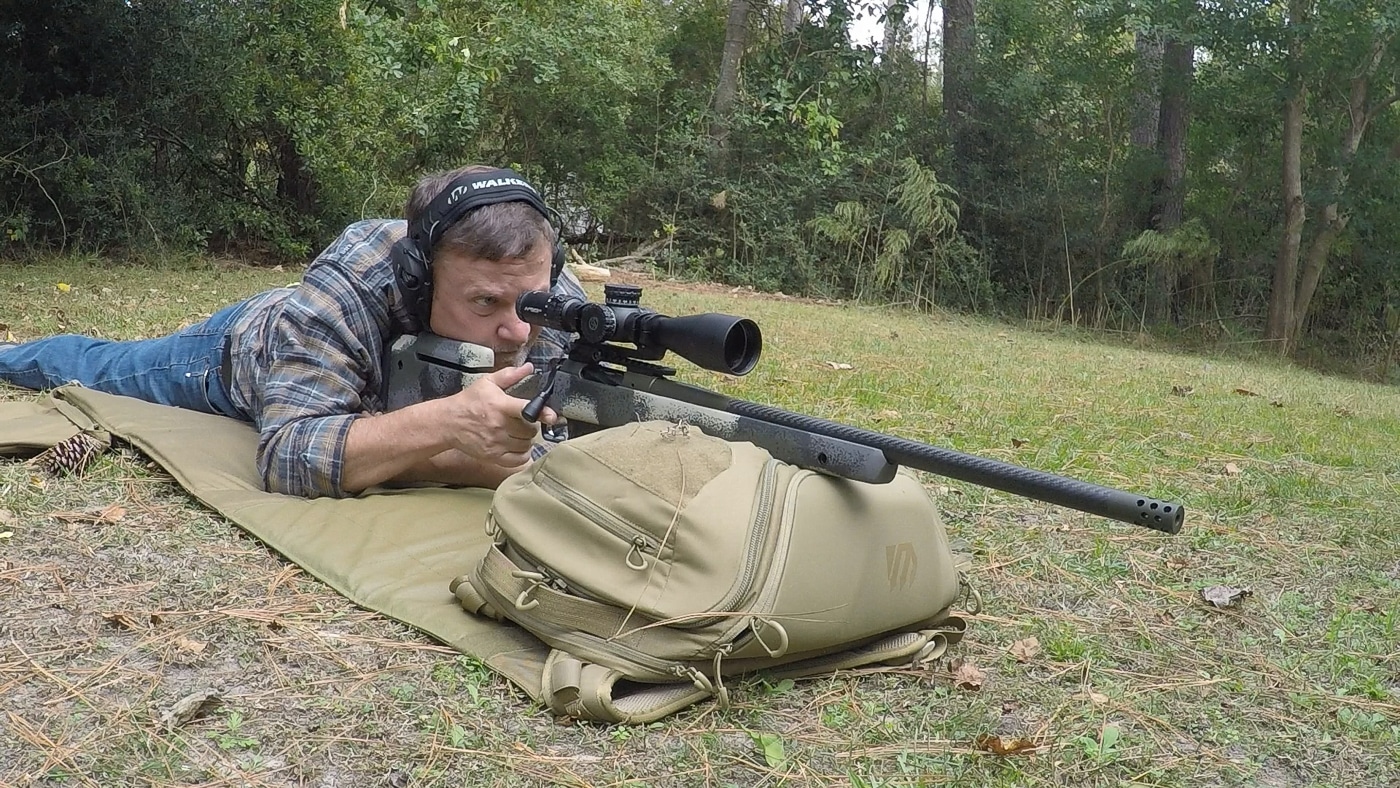
The aiming point is a chevron with 10 MIL up, left and right compensation hold marks for out to 1,000 yards. A chart in the ACSS Apollo manual allows you to find your caliber, bullet type, muzzle velocity and altitude to correctly calibrate the Bullet Drop Compensator (BDC) marks.
So long story short, I’m using 140-gr. Hornady ELD ammo with a muzzle velocity of 2,750 fps at sea level, so I need to zero at 100 yards. Once zeroed the bullet drop compensation marks are calibrated to the distance they indicate from 300 yards to 1,000 yards. So, I can go up and down the ladder quickly depending on target distance. Wind holds are horizontal dots to the left and right off the main strata in 5 mph increments. Your Kestral reads 9 to 10 mph and the grass is moving left to right, hold into the wind two dots to the right of the main strata. The ranging ladder in the top right quadrant is calibrated for an 18” wide target. Place the horizontal line that matches the width of the target, and you now know the target distance.
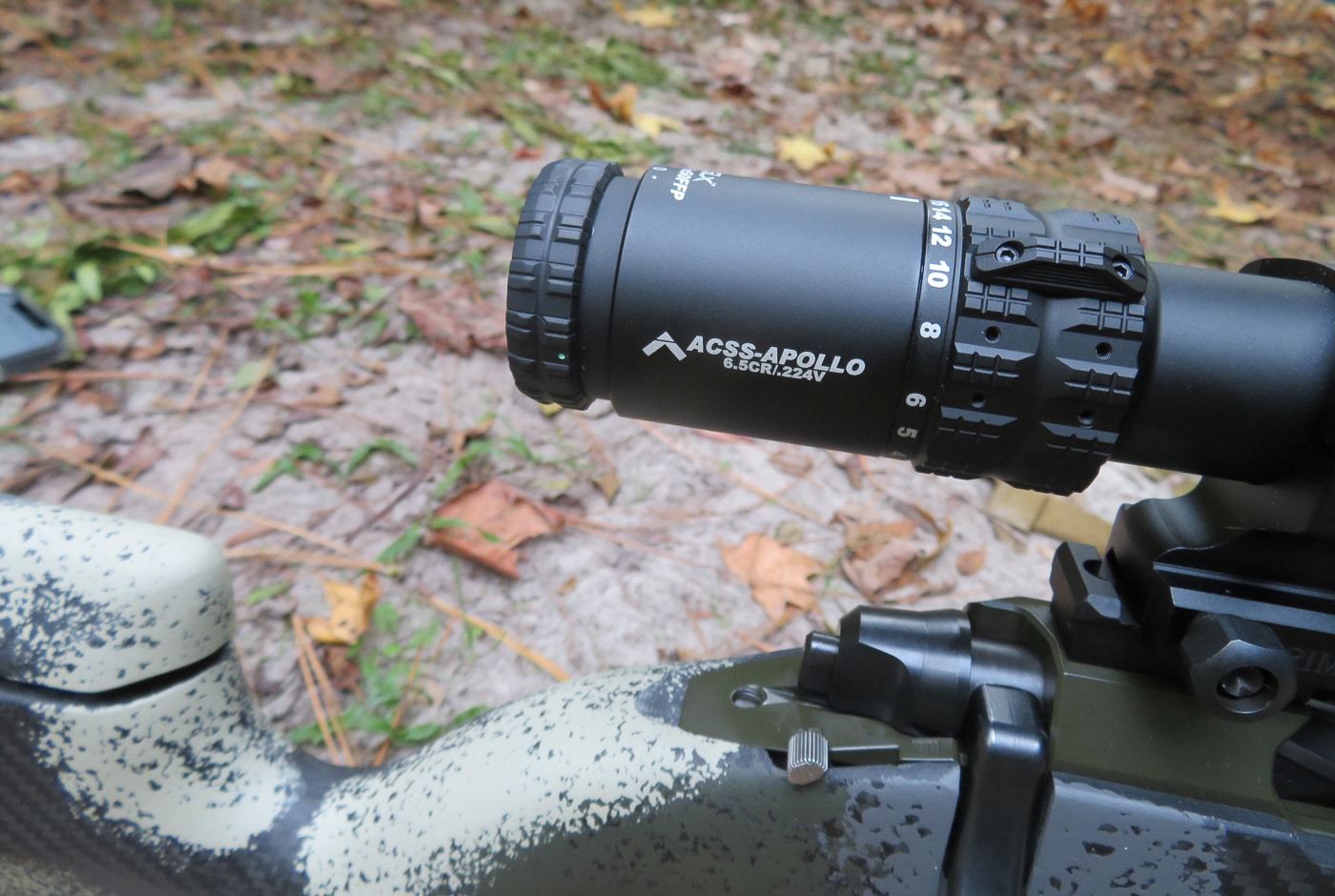
The reticle is also illuminated with 10 brightness settings. The illumination knob and parallax are stacked on the left side turret. The smaller, outmost knob adjusts illumination, while the inner larger diameter knob adjusts parallax. They are easy to distinguish and adjust.
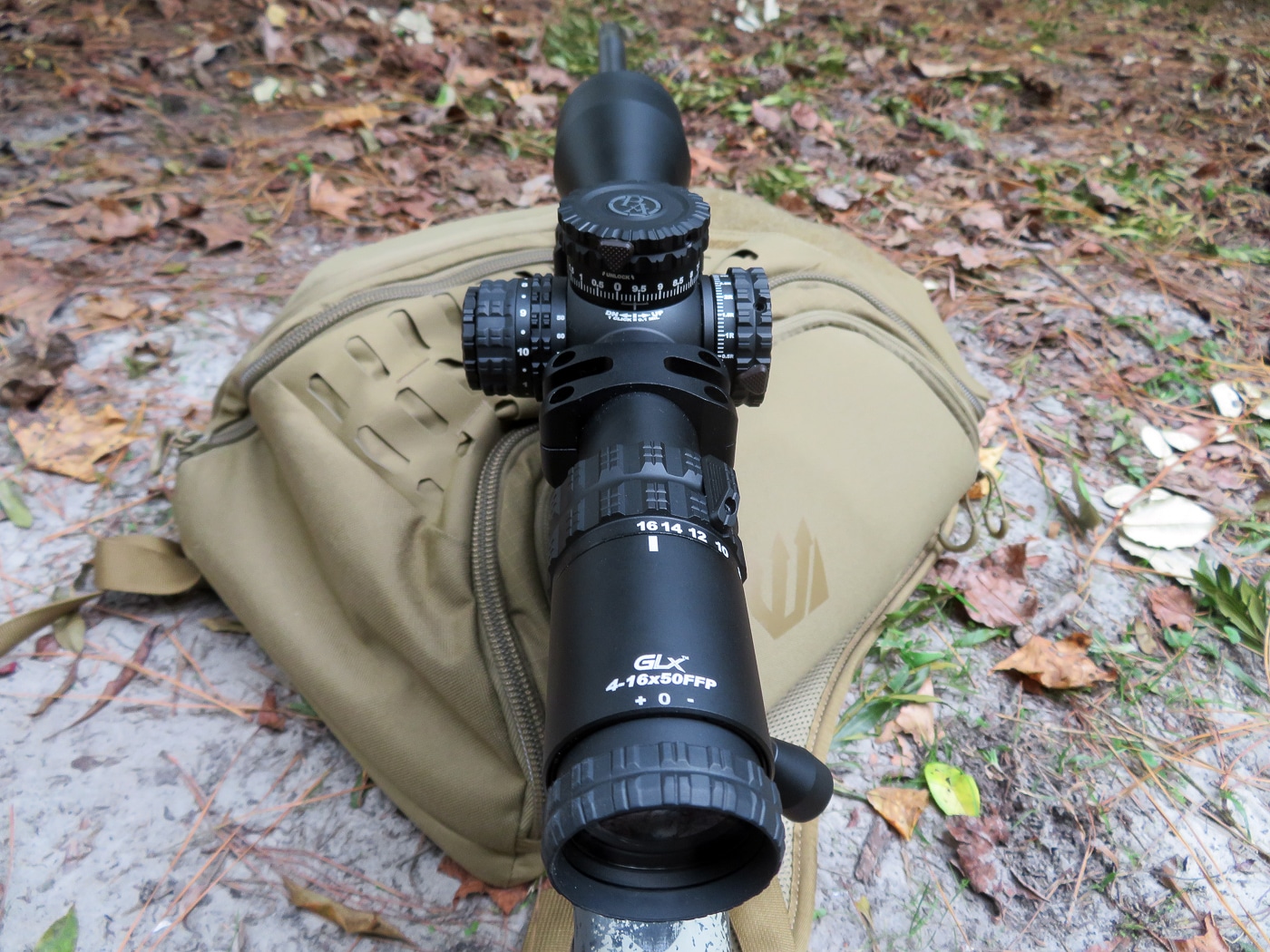
I shot the box to test repeatability and the GLx always found its way home every time.
Primary Arms Scope Review Conclusion
Like I mentioned, I zeroed the GLx on three different rifles, ranging from a long-range chassis rifle suitable for competition shooting to a long-range hunting rifle and now a lightweight carbon fiber barrel Springfield Armory Model 2020 Waypoint. This is just in time for deer season. The GLx is well paired on any of the rifles since the scope is not too long or bulky and only adds 24 oz. to the set up. Ergonomics are very good. Glass is sharp and clear. Looks like a winner to me!
Editor’s Note: Please be sure to check out The Armory Life Forum, where you can comment about our daily articles, as well as just talk guns and gear. Click the “Go To Forum Thread” link below to jump in and discuss this article and much more!
Join the Discussion
Featured in this article
Continue Reading
Did you enjoy this article?

 45
45




